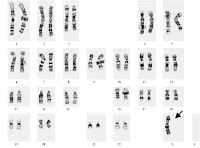Living things inherit traits in patterns-
- During sexual reproduction a cell containing genetic information from the mother and a cell containing genetic information from the father combine into a completly new cell, which becomes the offspring.
- A gene is a unit of heredity that occupies a spacific location on a cromosome and codes for a particular product.
- Heredity is passing of genes from parents to offspring.
- The various forms of the same gene are called alleles.
- An organism's phenotype describes the actual characteristics that can be observed.
- Genotype is the name for the genes an organisms has.
- A dominant allele is one that is expressed in the phenotype even if only one copy is present in the genotype- that is, even if the other allele is an alternative form.
- A recessive allele is one that is expressed in the phenotype only when 2 copies of it are present on the homologs.
Ex. Hair color is determined by multiple genes, can be affected by the environment, and sometimes changes over time. In somecases it has a dominantrecessive pattern similar to that of the eye fold gene. A brown haired mom or dad can have a bloned haired child. The allele for brown hair is dominant.
Answer questions 1-8 on pg 107 after reading this
That is basically it and that is the important stuff!
Samantha Caggiano Peiod 4 4th time






 then they are pulled a part and to the besty think and but they'r hand out in anaphase.
then they are pulled a part and to the besty think and but they'r hand out in anaphase.














 Mr. Finley then gave us a sheet to do about what we saw. Here are the questions asked on the sheet.
Mr. Finley then gave us a sheet to do about what we saw. Here are the questions asked on the sheet.
